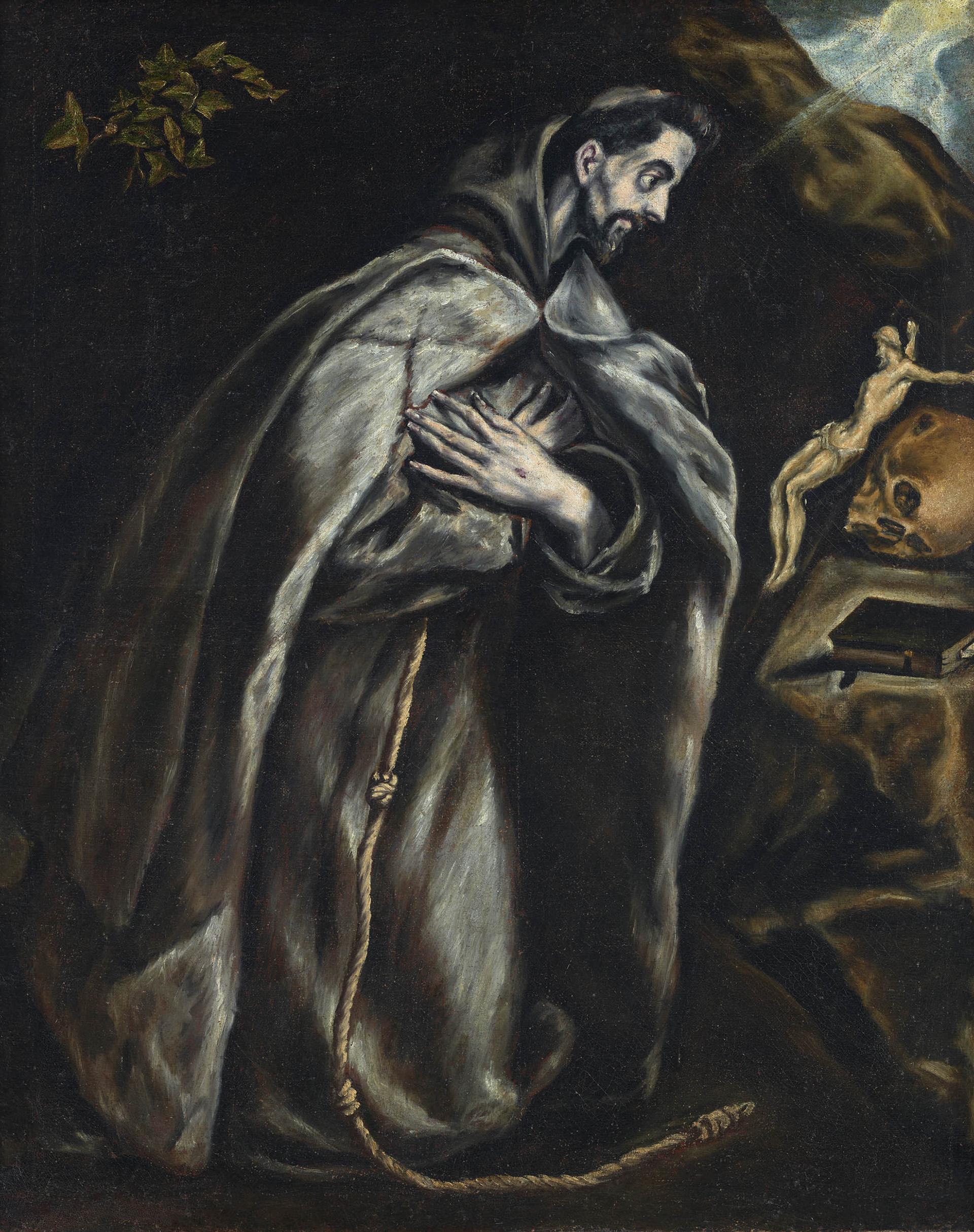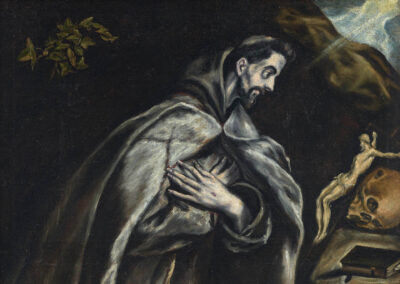This painting of Saint Francis of Assisi is also kept at the Hospital Tavera, possibly commissioned around 1600 by the rector Pedro Salazar de Mendoza (1549-1629), who kept a canvas of the saint in his hospital "desk" until his death, although it is only listed among the hospital's paintings as late as 1762.
However, not all historians agree with this hypothesis, and it is also considered to be the work of El Greco's workshop, painted between 1620 and 1625. In fact, his son and heir to the workshop, Jorge Manuel Theotocópuli, even spent a three-year period (1622-1625) living at the Hospital Tavera, which was maintained almost entirely at the institution's expense, and it may have been donated as consideration in kind; this option does not contradict the first, as it could have entered the hospital rector's collection after the Cretan's death and shortly after that of the administrator; indeed, in 1614, on the death of the Candiote, up to nine versions of the Saint Francis theme were recorded in his workshop.
A third, less plausible hypothesis has suggested that this canvas may have belonged to the second commission El Greco received from Salazar de Mendoza in 1608 to decorate his three altarpieces, which he was unable to complete due to his old age and death.
Saint Francis is depicted full-length and in profile, as a penitent on Mount Alvernia in Tuscan Cassentino, against a rock with a cavern and ivy plant, and before a crucifix and a skull, meditating on redemption and death, in yet another of the versions of this particular iconography and composition, of which at least ten have been catalogued, the foundational version in the Fine Arts Museum in San Francisco (USA), dated before the end of the century and of much larger dimensions (147 x 105 cm), being considered the most important.
The saint wears a Franciscan habit, the ownership of which was openly criticised by the Sevillian theorist of iconography and Velázquez's father-in-law, the painter Francisco Pacheco, for excusing its cheesecloth texture; he is kneeling, leaning his body towards the crucifix and showing the wounds of the Stigmatisation of 1224 in his hands crossed over his chest. Saint Francis founded his order in 1221 for regulars and the Third Order for laymen, the importance of which gradually increased during the 15th century.
This composition by El Greco seems to have been developed in the last decade of the 16th century, after the half-length image still more frequently used by El Greco and his workshop. El Greco would cultivate yet another Franciscan composition, meditating on death with a skull in his hands and in the company of Brother Leon, which, for even greater diffusion, he would end up turning into a print in 1606, opened by Diego de Astor.
On the other hand, the hypothesis that has found the basis for these canvases in the interpretations that the condemned archbishop of Toledo, Bartolomé Carranza de Miranda, would have made of the crucifixion, analysing the crucifix as a symbol of extreme penitence for the sins of the world, and that it should be taken as an example of repentance for Christians, seems to be unfounded. If in the Hospital de San Juan Bautista, meditation before the crucifix had a fundamental value and all the beds had a cross on them, and when the patient was dying, he was moved to another room and a crucifix was placed in front of his eyes until his death, this use was commonplace in contemporary Toledan society; the cross and skull seen in the work allude not only to that terminal moment, but to any act of prayer.
This picture would represent the model of prayer and ascetic life to be followed both in and outside the hospital, as demonstrated by the widespread practice of burial in the Franciscan habit.
Fernando Marías, January 2009


